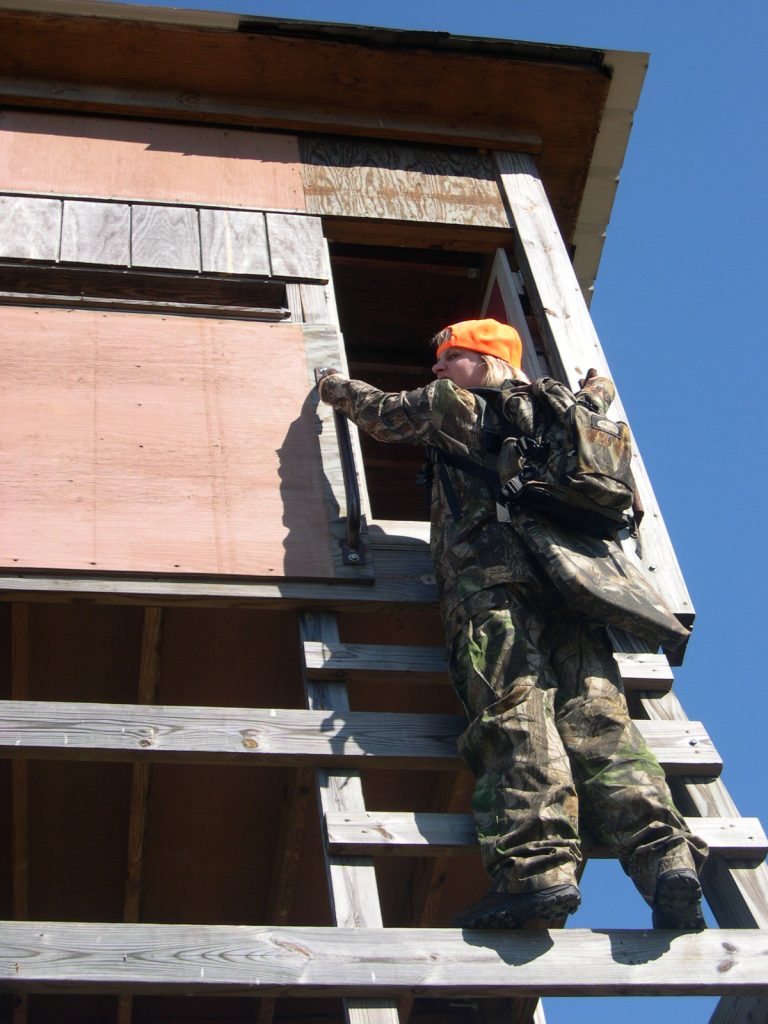Climbing into a treestand. Walking miles through dense underbrush in pursuit of game. Trudging through wetlands in search of waterfowl. Fighting that giant fish on the end of the line. These activities and more provide a great deal of joy for many outdoors enthusiasts, but severe joint pain can make them a thing of the past if not treated correctly.
Many a hunter and angler, especially those who are getting up in age, are having to limit their outdoor activities due to joint pain, but fortunately, for many who suffer, joint replacement surgery can get them back outdoors and active within a matter of weeks.
Dr. Jacob Seales, a joint replacement and revision surgeon in Ft. Walton Beach, Florida, who specializes in hip and knee replacements assisted by the Stryker Mako® robotic-arm, said the most common joint disease, osteoarthritis, can have a genetic component and is also a result of the natural wear and tear on joints from aging. Younger people can also suffer from joint issues due to disease or injury.
The Center for Disease Control (CDC) reports that approximately one in four adults in America suffer from doctor-diagnosed arthritis and almost 44% of those diagnosed are so physically limited that they can’t fully take part in the activities and hobbies they enjoy.
Joint Disease Limitations
Seales said the longer you live, the more likely you’ll end up with some degree of osteoarthritis.
When cartilage breaks down and thins out over time, it causes pain and inflammation. Seales said when someone comes in to his office with pain, stiffness, swelling and/or loss of motion in their knee or hip, he does an x-ray or MRI to confirm a diagnosis of joint disease and to see how far it’s progressed.

“If it’s in the early stages and not too severe, we will start off with conservative treatment, like physical therapy, activity modification, and steroid and pill treatment. But arthritis always progresses. There’s no cure or any treatment that will reverse the damage – not even stem cell treatment that you hear so much about. So, it will inevitably get worse. And once that cartilage is gone, then you have bone rubbing on bone, which can cause intense pain,” Seales said.
Time for Surgery
He said it’s a personal decision as to when someone should seek out joint replacement surgery, but they often start asking about it when the pain gets so bad that they can no longer participate in the activities they love.
Seales performs many joint replacement surgeries on people in their 60s and 70s and on healthy individuals in their 80s and 90s. But he also operates on younger patients who may need joint replacement surgery because they suffer from other types of arthritis, injuries and joint disease.
Seales said many patients wait too long to seek surgery out of fear – either of the surgery itself, of the pain and recovery process after the surgery or because they believe the surgery won’t truly help their pain and limitations.
“The truth is, after they’ve received the surgery, so many of my patients tell me they should have done it a long time ago,” he said.
More Precise Surgery with the Stryker Mako Robotic Arm
Seales says five years ago, he began using the Stryker Mako robotic arm, which enhances precision, decreases pain and improves recovery time.
He said the surgery with the robotic arm only takes approximately 30 minutes.

“Before the surgery, we take a CT scan of the joint and input that info/image into the robotic arm,” Seales said.
The system creates a 3-D virtual model of the joint to help the doctor plan for the surgery. During the surgery, the surgeon can use the robotic arm to prepare the bone, introduce the implant and ensure that it is balanced and fits well.
The surgeon is able to see the pre-surgical plan overlaid on the real-time surgery to use as a guide. The robotic arm’s tracking eyes can adjust for very small movements of the knee if they occur. It precisely prepares the bone according to visual boundaries that protect the essential structure of the knee and removes only the part that’s been affected. The implant is placed, the joint is properly balanced, and the surgeon can make adjustments if needed.
“The robotic arm makes the actual cuts so the alignment is within a half millimeter and a half of a degree of where it’s supposed to be. The robotic arm offers a much more precise way of performing this surgery. It allows me to finetune cuts so I can do less soft-tissue release to make adjustments, which means less need for pain control and a quicker recovery,” Seales said.
Of course, one must understand that the robotic arm is controlled by the surgeon who combines his or her knowledge and judgment with the robot’s precision and control. The robot isn’t performing the surgery, the surgeon is, but with the robot’s help.

During the procedure an arthritic or dysfunctional joint surface is replaced with an orthopedic prosthesis. The most commonly performed joint replacements are hip and knee, but replacement surgery can be performed on other joints, including the ankle, wrist, shoulder and elbow.
On the Road to Recovery
After the surgery, hospital staff will usually get the patient up and moving around within a few hours, and he or she can often return home that same day. Older, more debilitated patients can usually return home the next day.
“Usually, after around six weeks of recovery, most people are starting to get back to their normal lives and doing the things they enjoyed doing before they suffered from severe joint pain. They’ll have some limits the first couple of months, but after three months, they will enjoy pain-free full range of movement in the replaced joint with no restrictions or long-term issues.”
According to the National Library of Medicine, joint replacements are expected to become much more common over the next 10 years. Overall, total hip and total knee revisions are projected to grow by 137% and 601%, respectively, between 2005 and 2030.
So why suffer in pain and why live the rest of your life unable to participate in the outdoor sports and activities you love, when there’s a solution? If you think you’re suffering from joint disease, and you’re no longer able to climb that stand, or walk that trail to your favorite hunting local, then make an appointment with our local orthopedic surgeon. If joint replacement surgery is right for you, you may find yourself doing all the things you love again before you know it.




